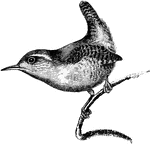
Wren
"Troglodytes parvulus, Wren, the coloration is ordinarily brown, with a great tendency to barring; spots,…

Sugarbird
"Certhiola flaveola, the Sugar-bird, coloration varies from black, grey, or purplish, relieved by rufous…
Black Oat Grass
Black Oat Grass (Stipa avenacea) is found in dry, sandy woods and has no agricultural value. It grows…

Black Oat Grass
Black Oat Grass (Stipa avenacea) is found in dry, sandy woods and has no agricultural value. It grows…
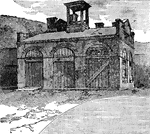
John Brown's Fort in Harpers Ferry
John Brown's Fort (the engine house) from John Brown's Raid on Harpers Ferry. Brown led a group of 21…
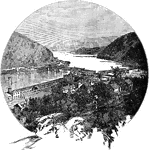
Harpers Ferry
Harpers Ferry is a historic town in Jefferson County, West Virginia. It is located at the confluence…
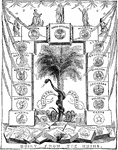
Southern Republic Built from the Ruins
A political cartoon of the Southern states being built from the ruins after the Civil War.
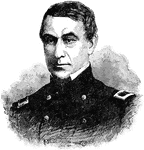
Major Robert Anderson
Robert Anderson (1805 - 1871) was a Union Army officer in the American Civil War. He is most known for…
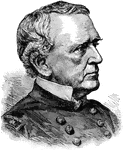
General John A. Dix
John Adams Dix (1798 - 1879) served as the Secretary of the Treasury, U.S. Senator, and New York Governor.…

Fac-smile of General John A. Dix's Dispatch
John Adams Dix, of New York, was appointed Secretary of the Treasury. He sent Mr. Jones to New Orleans…
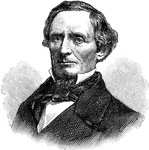
Jefferson Davis
Jefferson Finis Davis (1808 – 1889) served as President of the Confederate States of America for…
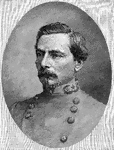
General Pierre Gustave Toutant Beauregard
Pierre Gustave Toutan Beauregard (1818 - 1893) was a Louisiana-born author, civil servant, politician,…

Captain Knott V. Martin's Pig
It is four o'clock in the afternoon when a messenger rides up to the house of Captain Knott V. Martin.…

Massachusetts Sixth Attacked When Marching Through Baltimore
The Massachusetts Sixth is the first to leave to save Washington from the Confederates. However, they…
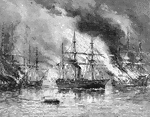
Norfolk Navy Yard Burning
The Norfolk Naval Yard, also known as the Norfolk Naval Shipyard became an integral shipyard during…

New York Seventh Regiment Marching Down Broadway
The secessionists tore up the railroad but the men of the eighth Massachusetts knew how to build railroads.…
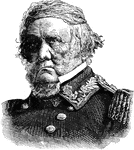
General Winfield Scott
General Winfield Scott (1786 - 1866) was a United States Army general, and unsuccessful presidential…
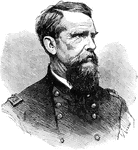
Francis Preston Blair Jr.
Francis Preston Blair Jr. (1821 - 1875) was an American politician and Union Army general during the…
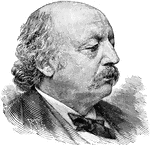
Benjamin Franklin Butler
Benjamin Franklin Butler (1818 - 1893) was a lawyer and politician who was a U. S. Representative for…

General Butler Declaring African Americans "Contraband of War"
The controversial General Benjamin Franklin Butler declares that the African Americans are "contraband…
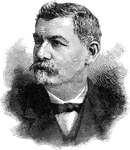
General George B. McClellan
General George B. McClellan (1826 - 1885) was a major general during the Civil War. He is most known…
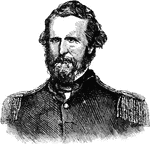
General Nathaniel Lyon
General Nathaniel Lyon (1818 - 1861) was the first Union general to be killed in the Civil War and is…
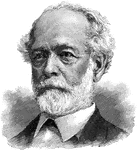
General Joseph Eggleston Johnston
General Joseph Eggleston Johnston, also known as General J. E. Johnston (1807 - 1891) was a U.S. Army…
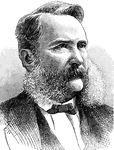
General James Longstreet
General James Longstreet (1821 - 1904) was a famous Confederate general of the American Civil War and…

First Battle of Bull Run
The First Battle of Bull Run is also known as the First Battle of Manassas and was the first major land…

Robinson's House in Battle of Bull Run
The Robinson House belonged to a free African American during the First Battle of Bull Run. The house…
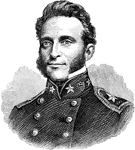
General Thomas Jonathan "Stonewall" Jackson
Thomas Jonathan "Stonewall" Jackson (1824 - 1863) was on of the most well-known Confederate generals…

Battle of Ball's Bluff
The Battle of Ball's Bluff is also known as the Battle of Harrison's Island or the Battle of Leesburg,…
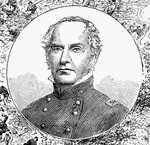
Colonel Edward Dickinson Baker
Colonel Edward Dickinson Baker (1811 - 1861) who served for the state of Illinois in the U.S. House…

Battle of Ball's Bluff
The Battle of Ball's Bluff is also known as the Battle of Harrison's Island or the Battle of Leesburg,…
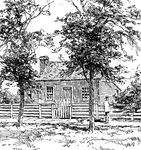
General Ulysses Grant's Birthplace
The house in which General Grant was born in Point Pleasant, Ohio, east of Cincinnati on the Ohio River.

Battle of Belmont
The Battle of Belmont was fought on November 7, 1861 in Mississippi County, Missouri. This battle was…
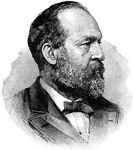
General James Abram Garfield
James Abram Garfield (1831 - 1881) was the 20th President of the United States and General of the Union…

Gunboat of the Mississippi
A gunboat of the Mississippi. Gunboats Essex, Carondelete, Cincinnati, St. Louis, and Benton steamed…
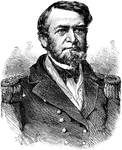
Admiral Andrew Hull Foote
Andrew Hull Foote (1806 - 1863) was an admiral in the United States Navy who served during the Civil…

Attack of the Gunboats at Fort Donelson
Attack of the gunboats at Fort Donelson, one of the most influential battles in American history. This…

Battle of Pea Ridge
The Battle of Pea Ridge, also known as Elkhorn Tavern, was fought on March 7th and 8th in 1862 during…
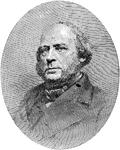
John Ericsson
John Ericsson (1803 - 1889) was a Swedish inventor and mechanical engineer. After the Civil War began,…
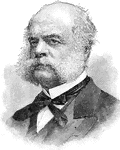
General Ambrose Everett Burnside
Ambrose Everett Burnside (1824 - 1881) was an American soldier, railroad executive, inventor, industrialist,…
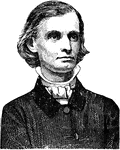
Henry Augustus Wise
Henry Augustus Wise (1819 - 1869) was a U.S. Naval Officer who served in the U.S. - Mexican War and…
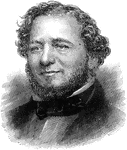
Judah Philip Benjamin
Judah Philip Benjamin (1811 - 1884) was an American politician and lawyer. Benjamin was the first Attorney…

Battle of New Bern
Landing at the Battle of New Bern, also known as the Battle of New Berne or Battle of Newbern which…

Battle of Island Number Ten
Bombardment and capture of Island Number 10 was an engagement at the New Madrid or Kentucky Bend on…

USS Carondelet
The USS Carondelet was a City class ironclad gunboat constructed for the Union Navy by James…

Shiloh Church at Battle of Shiloh
The Shiloh Church is an important landmark during the Civil War during the Battle of Shiloh, also known…
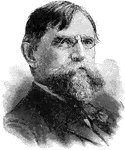
Lewis Wallace
Lewis "Lew" Wallace (1827 - 1905) was a lawyer, governor, and Union general in the Civil War. He is…

Pittsburg Landing in Tennessee
Pittsburg Landing is a town in Hardin County, Tennessee and is named for the industrial heritage of…

Battle of Fort Pillow
Battle of Fort Pillow is also known as the Fort Pillow Massacre, fought on April 12, 1864 on the Mississippi…

First Battle of Memphis
The First Battle of Memphis was a naval battle fought on the Mississippi River directly above the city…

Battle of Fair Oaks
The Battle of Fair Oaks, also known as the Battle of Seven Pines or Fair Oaks Station was fought on…
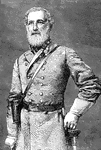
General Robert E. Lee
General Robert E. Lee (1807 - 1870) was a career United States Army officer and one of the most celebrated…

Battle of Mechanicsville
The Battle of Beaver Dam Creek, also known as the Battle of Mechanicsville or Ellerson's Mill took place…
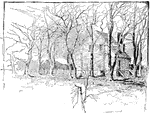
Watts' House at Battle of Gaines' Mill
Watts' House was an important house during the Battle of Gaines' Mill, also known as the First Battle…

Battle of Gaines' Mill
The Battle of Gaines' Mill, also known as the First Battle of Cold Harbor or the Battle of Chickahominy…
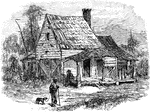
Battle of Cold Harbor
This sketch depicts the famous New Cold Harbor where the Battle of Cold Harbor took place. This was…

Battle of Malvern Hill
The Battle of Malvern Hill, also known as the Battle of Poindexter's Farm took place on July 1, 1862,…

Harrison's Landing
Harrison's Landing at Berkeley Plantation is one of the first great estates in America located on the…


